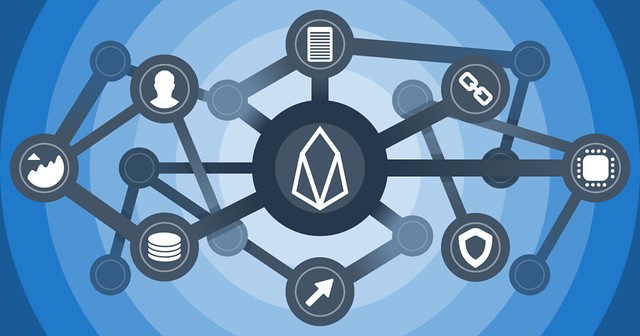 image credited to FLYERDIARIES.COM
image credited to FLYERDIARIES.COM
EOS is a blockchain-based decentralized system that facilities the development, hosting and deployment of commercial-scale decentralized applications. The platforms maintains all of the needed core work to permit businesses and individuals to make blockchain-based applications in a same way to website-based applications, like providing safe access and authentication, data hosting, permissions, usage management, and communication between the internet and dApps. It is also supported by a web-toolkit for interface development, making it a full offering for application development.
How does EOS work?
EOS is to build a blockchain platform that can process 1000s of transactions per second without on-chain transaction costs. Blocks are generated by Block Producers, similar to a miner on Ethereum. When they generate blocks, they are paid by the EOS blockchain itself, removing the fees from the user. The EOS token has a built-in inflation-rate which supports maintain the ecosystem. On the EOS blockchain, 2 blocks are generated every second. Only 1 block producer is promised to make a block at any given point in time. In order to make sure the network is performing at an optimal rate, a block producer that does not generate a block within a predefined time slot is temporarily removed from the network. According to the EOS white-paper, the DPoS protocol is what permits the network to operate free of transactions fees. Fewer nodes are needed to confirm transactions, which has the outcome of requiring less power to operate the network as a whole. Additionally, the delegated nature of verification assignment stops centralization of the network. The EOS protocol links Horizontal Scalability, which permits EOS network to process up to million transactions per second. Horizontal Scalability gathers several software and/or hardware entities into a one entity that acts as one to process transactions. Traditionally, most networks have used Vertical Scalability, which involves including more PC power to a single entity that process transactions.
EOS IPFS the distributed Cloud Storage
Cloud storage in a system called IPFS (InterPlanetary File System) will be a part of the EOS system as well. As a decentralized application developer, you will be able build and deploy apps, allow cloud storage, and download bandwidth in a totally distributed manner. This open up you to bring your ideas into reality free from the demands of securing bandwidth and storage. As a developer, you also have right of entry to usage analytics for storage and bandwidth directly from EOS and are capable to set restrictions for specific applications. You pay for these services by staking EOS tokens.
EOS GO Telegram - EOS News Channel - Twitter
EOS GO is funded by EOS ASIA and powered by YOU. Join the community and begin contributing to the movement by adding eos go to your name and joining the EOS GO telegram group.